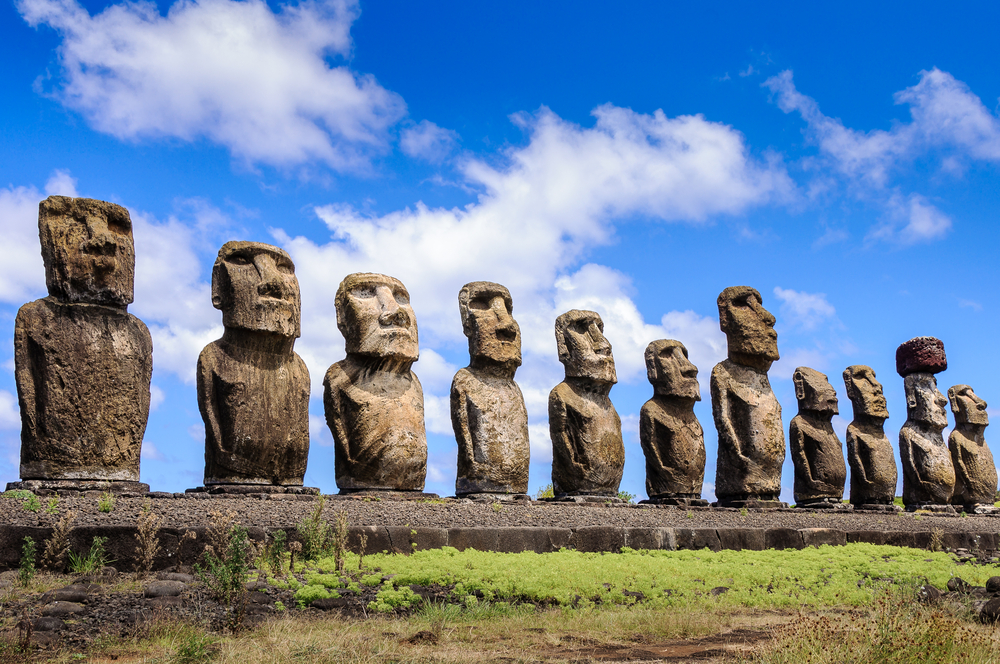Mysterious Easter Island Engravings Question When Writing was Invented
Posted on Categories Discover Magazine

Up to half a century ago, researchers established that writing originated in Mesopotamia in the fourth millennium B.C., and spread to the rest of the world, adapting to different languages. Since the 1970s, however, the decipherment of Maya and further discoveries has suggested that humans invented writing not once, but four separate times: in Mesopotamia, Egypt, China, and Mesoamerica.
In a recent study published in Nature, researchers at the University of Bologna in Italy have dated the wood of an ancient tablet from the isolated island of Rapa Nui (also known as Easter Island) to before the arrival of Europeans, providing indirect evidence of a possible fifth independent invention of human writing.
“This would be a preliminary but fundamental step in understanding how many times human beings reached the revolutionary invention of writing,” says Silvia Ferrara, co-author of the study and philology professor at the University of Bologna.
Read More: Unraveling the Story Behind Easter Island’s Resilient Statues
The Rongorongo Tablets
The tablets of Rongorongo, which have yet to be deciphered, have attracted scholarly interest since the arrival of Europeans in Rapa Nui because of its seemingly isolated development. Its symbols represent human figures, body parts, tools, plants, animals, and celestial bodies. Though it’s not similar to any other known script, several elements, including linear sequences, ligatures, and evidence of corrections would suggest that it is a proper language.
Rapa Nui was first settled by Polynesians between A.D. 1150 and 1280, where they developed a culture that today is most often represented by the iconic moai statues, megaliths sculpted in the shape of giant busts. They also developed a local script, called Rongorongo.
European seafarers landed on Rapa Nui in the 1720s, and around a century later began raiding and kidnapping the locals. By the end of the 1800s, the Rapa Nui culture had been erased. Only 27 tablets of Rongorongo – about 17,000 glyphs altogether – survived, taken abroad by missionaries in the mid-19th century. Four of the Rongorongo tablets made their way to the Congregazione dei Sacri Cuori di Gesù e di Maria, in Rome, Italy.
“Out of the 27 tablets which are scattered all over the world, the tablets in Rome are very significant because they have a lot of content – a lot of written text, on them,” explains Ferrara.
Dating the Tablets
Ferrara has been researching two main questions regarding the Rongorongo script: whether the script was invented independently of influences from cultures that were already writing – in other words, whether the people of Rapa Nui were writing before the arrival of Europeans – and to what extent the script can be deciphered.
It was Sahra Talamo, co-author of the study, chemistry professor at the University of Bologna, and director of the Bologna Radiocarbon Laboratory devoted to Human Evolution (BRAVHO), who suggested radiocarbon dating the wood of the tablets in Rome.
“I thought it was impossible,” Ferrara admits, “I thought the Congregazione would never give us the authorization to do so, because radiocarbon dating is quite a destructive technique. But they did give us the permit!”
Read More: When Did Humans Evolve Language?
“Radiocarbon dating is the only great dating technique that goes back to 55,000 years ago,” Talamo explains. “And the BRAVHO lab always strives to minimize the impact of our analyses by using minimal samples whenever possible.”
Before extracting the wood for the dating technique, the team also created the first-ever 3D models of the four Rongorongo tablets in Rome using a laser scanner.
Interestingly, the radiocarbon dating yielded a very early date for the wood of one of the four tablets: about A.D. 1450, which in fact precedes the arrival of the Europeans by over 200 years.
Dating the Script
There is a catch, however. Just because the wood of the tablet dates to the 15th century doesn’t necessarily mean that the Rongorongo script was carved into it at the same time.
“The dating of the wood doesn’t mean that we can actually date the synchronic composition of the text, but the burden of proof is on anybody that claims that the actual text was written much later than the wood felling date,” Ferrara explains.
Both researchers postulate that the tablets were inscribed shortly after being cut from the tree.
Read More: How Language Shapes Our Understanding of Reality
“We dated exactly the moment when the tree was cut. It’s crucial to consider that with the passing months, days, or even years, if the tree isn’t well-preserved, it could dry out, rendering the wood impossible to use for writing,” Talamo adds. “So it is probable that the script was made around the same time, or not too much later.”
If the Rongorongo script was created before the arrival of Europeans, that would make it the fifth time in history that humans developed an independent writing system: a truly enlightening discovery, given that just half a century ago experts believed that humans had invented writing just once.
While the researchers are cautious in claiming this just yet, Ferrara is hopeful, “If human beings invented a writing system independently four times, the question is, why not more? Indirect evidence points in that direction.”
Article Sources
Our writers at Discovermagazine.com use peer-reviewed studies and high quality sources for our articles, and our editors review for scientific accuracy and editorial standards. Review the sources used below for this article: